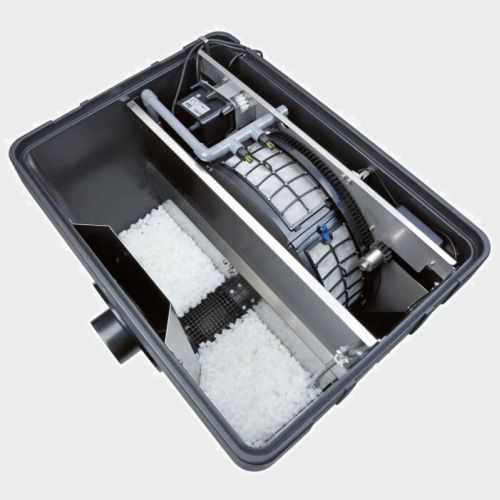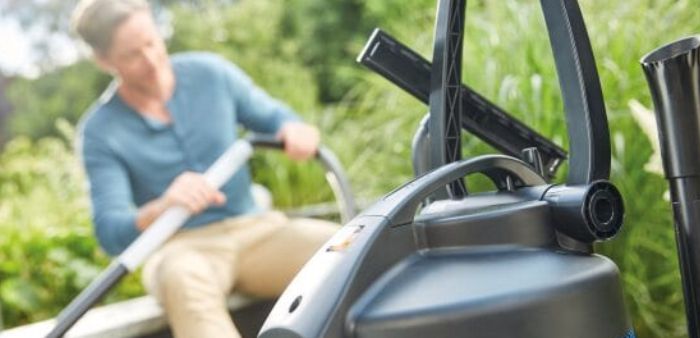
We get asked a lot of questions about Koi ponds and construction. So here are some of your most frequently asked questions answered.
The minimum recommended depth is at least 3 feet, ideally 4. Design any planting areas so fish can't enter. Suitable koi safe bog/marginal planting areas are easy to design at the construction stage. SEE examples of edging ideas here.
Keep your pond shape simple, maybe oval, kidney, round, pear shape or rectangle. Whatever your design, it should allow water to flow freely around the pond, avoiding tight corners or areas where water can not circulate properly. A good shape will also make pond liner installation tidier and more straightforward, with the added benefit of easier ongoing maintenance.
Koi grow big and need space and depth. We would suggest nothing smaller than 5000 litres. This could be a pond 2 x 2.5 x 1 metre deep and could support maybe five mature koi. Pond Volumn Calculator
This stocking figure is an estimate, and the actual figure will depend on many factors, including filtration, environment, feeding. Therefore, it's essential to test your pond water regularly to ensure perfect water quality.

A flexible rubber pond liner is the easiest and most popular lining for a koi pond, allowing you to build pretty well any size and shape of pond you like.
Will a preformed pond be suitable for koi? Few shaped ponds have the depth or space for many koi. However, in some gardens where space is limited, these may work well.
Concrete koi ponds. A concrete pond is a significant construction project with the associated price tag. Although there are fantastic examples of concrete ponds, it's not for the faint-hearted. Waterproofing can be tricky, with any subsidence/settlement in the concrete causing cracks and leaks. We would suggest you use a reputable builder and consult a structural engineer before starting.
You may decide on a raised or free-standing koi pond for many reasons, including less or no digging. Pond viewing windows look great in a raised pond and have recently become popular, giving you a new dimension for watching your koi. Read our design ideas and edge tips for ideas
A successful Koi pond requires excellent water quality. To achieve this, you will need:
1. A Pond Pump: We recommend a solids handling pump. These pump larger solids, such as toxic fish waste, directly from the pond into the filter system, where the solids are easily separated and treated. (These pumps, being economical to operate, are also suitable in gravity return filters, where the pump is located in the filter, drawing the water through, then pumping the water back to the pond)
2. A Koi Pond Filter: Koi pond filters primary work biologically by breaking down toxins in the water. However, several filters now have a mechanical system to remove large waste particles and debris in stage one. This mechanical removal reduces the loading on the biological element of the filter, improving the efficiency.

3. A UV Clarifier: An ultraviolet clarifier is an electrical unit housing a high powered UV light. The pond water is pumped through, usually before the biological filter. As the water passes around the powerful UV light, it causes the microscopic single-cell algae to clump together, allowing them to be collected and broken down by the biological filter, thus eliminating the problem of green water. At high enough levels, UV light also reduces harmful bacteria in the pond.
Both filter systems do the same job, maintaining water quality and keeping your pond clear. However, there is one fundamental difference that can impact design and ease of build.
Pump Fed Koi Filters: As the name suggests, a pump in the pond pumps the water directly to the filter. Most koi pond filters are gravity return, so the filter's outlet will need to be higher than the pond's water level. (There are a few pressure filters that can be positioned lower than the water level, but few are capable of maintaining a reasonably sized koi pond)
Pros:
Cons:
Gravity Fed Koi Filters: Gravity pond filters have a pump located at the end of the filter system. This pump draws the water through the filters and pumps it back to the pond. As the water is drawn under gravity into the filter, a large diameter rigid pipe is required, connecting the pond filter to the pond using a liner connector/bottom drain.
Pros:
Pump out of sight
Solids are drawn whole into the filter for easier separation
Easy to install skimmers
Filters are near ground level and can be hidden
Cons:
Harder to install
Liner connector/bottom drain can be a weakness if not installed properly
Fittings more expensive
A well designed and filtered koi pond is not hard to keep once established.
You will need to:

No: A larger, deeper garden pond with excellent water conditions may support a few Koi. However, don't expect a clear pond! Koi stir up silt being bottom feeders and can be destructive to pond plants, turning and knocking them over, spilling the soil etc.
To ensure consistent good water quality, we would recommend a suitably sized pond filter.
Koi are beautiful, long-lived, friendly fish. Koi regularly grow to around 60cm long, and with the proper water conditions and warm temperatures, certain varieties could grow to over a metre in length.
Koi commonly live 15 to 40 years in a pond, although the oldest recorded koi was over 200 years old!
Many factors affect koi lifespan, including their environment, food quality, genes and speed of growth.
Healthy koi will typically thrive in good water conditions but are susceptible to sudden water quality deterioration. Over 70% of koi health issues are likely to be attributed to poor water quality.
It is vital to monitor water toxin levels using a simple test kit regularly.
The tests should include Ammonia, Nitrite, Nitrate, pH, Water Hardness and Chlorine levels, with target levels being within the safe zone as per your test kit instructions:
|
|
Safe Level |
Action Required |
|
Ammonia NH3/NH4* |
0.00 ppm |
0.25 ppm |
|
Nitrites NO2 |
0.00 ppm |
0.25 ppm |
|
Nitrates NO3 |
20-60 ppm |
80 ppm |
|
pH range |
7-8.5 |
Less than 7, Higher than 8.6 |
* Achieving zero ammonia levels is technically impossible. Fish naturally excrete ammonia from their gills, urine and faeces. We suggest aiming for zero ammonia as most test kits are not sensitive enough to pick up these low levels or distinguish between the two forms of ammonia (free ammonia and ionized ammonia).